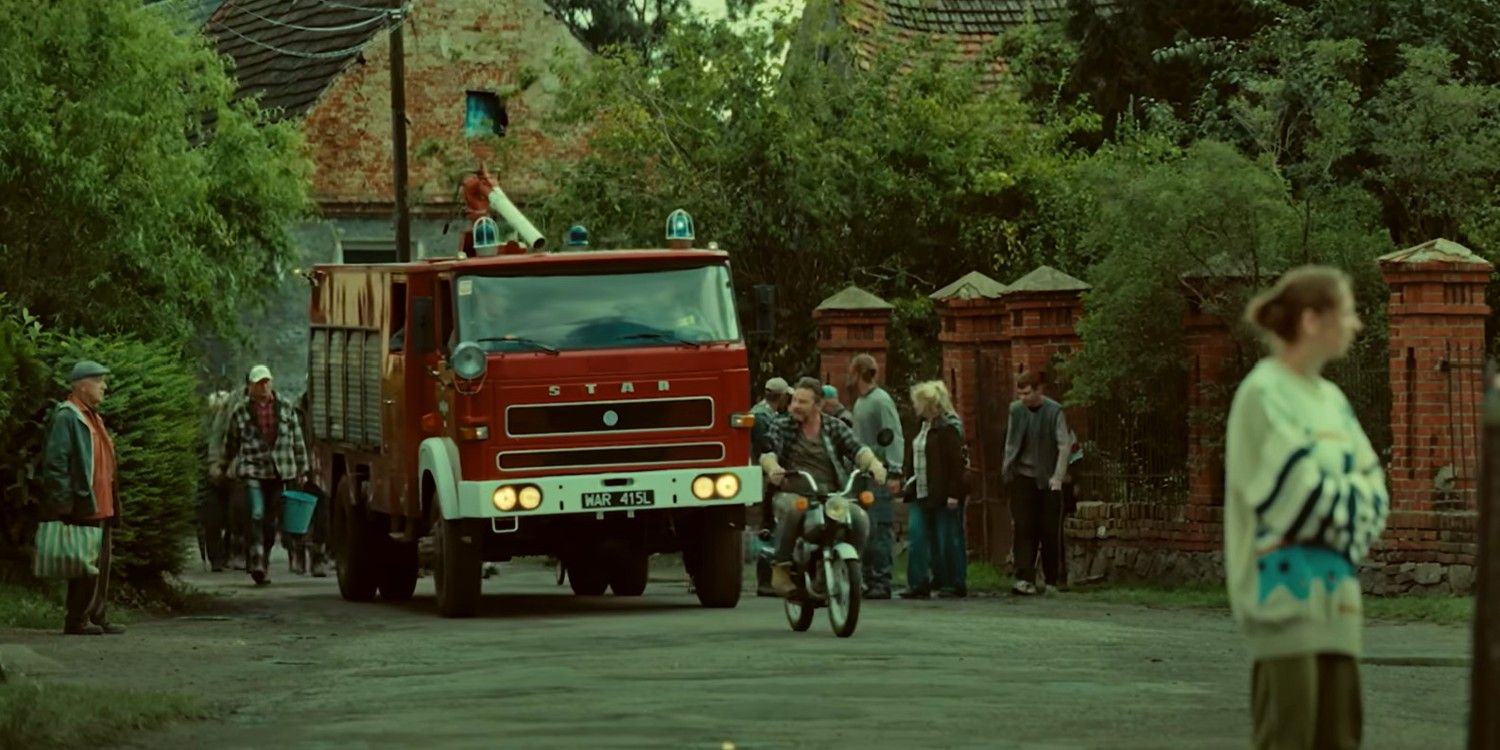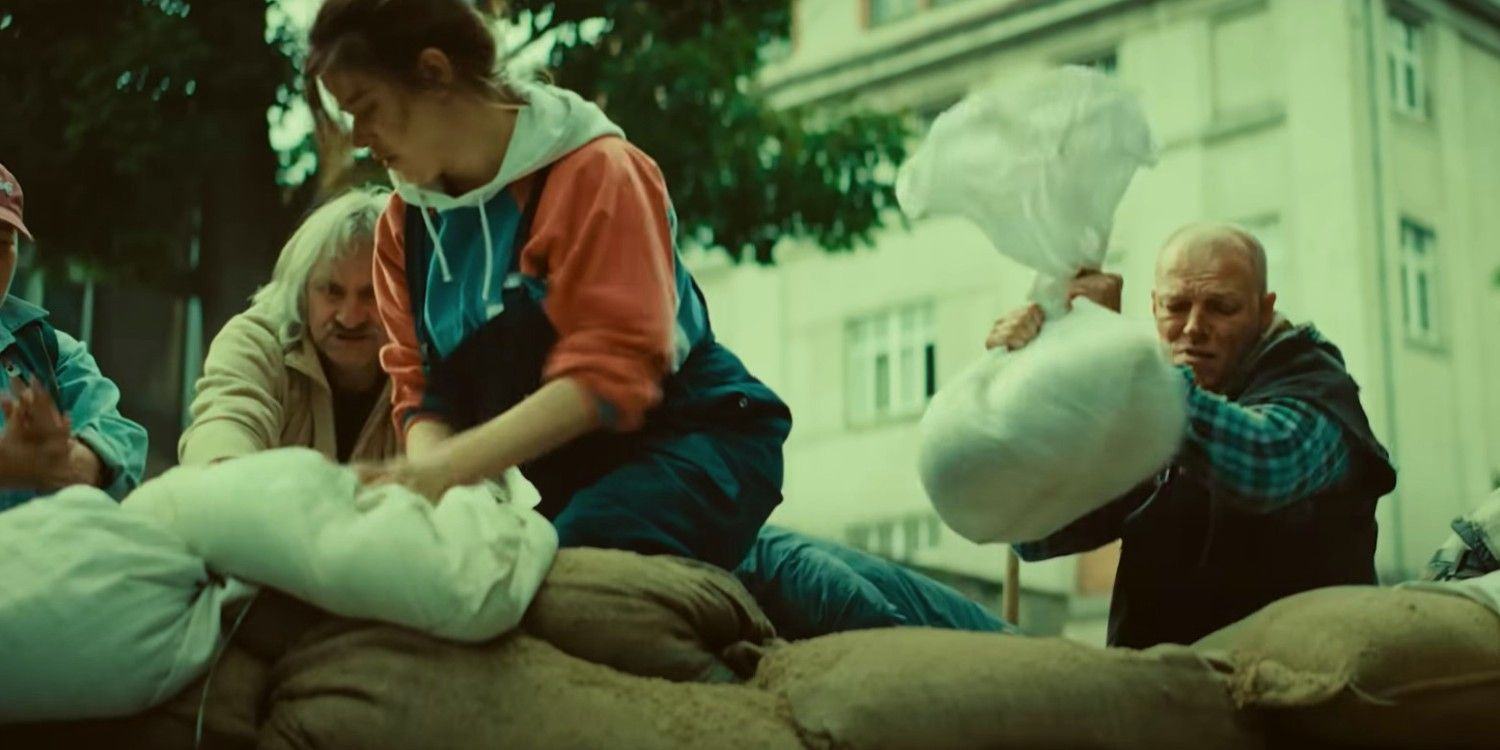warning! This article contains spoilers for Netflix high water levelnetflix high water level Based on the true story of the 1997 flood in Wroclaw (also known as the Central European flood), the film’s accurate depiction of events leading up to and during the disaster is a prime example. Wroclaw, the capital of the Lower Silesia province in southwestern Poland, was hit hard by the historic weather event. Sometimes known as the Millennium Flood, rising waters engulfed 40% of cities and also hit Germany and the Czech Republic.
Netflix’s original TV show, praised for its authenticity, depicts local efforts to mitigate flooding from July 7 to July 12, 1997. For Netflix, the dissemination of Such stories and sharing them with other countries is an important element of global empathy, so that viewers can better understand the world beyond direct experience. It is important that a series like this high water level Strive for accuracy when telling these true stories as they emphasize that no one is truly alone and unheard of, not even on the international stage. Here’s what the main plot points of Netflix are really like high water level.
Contents
- 1 What caused the water level to rise during the floods in Central Europe in 1997
- 2 Why Poland and the Czech Republic were criticized for their 1997 flood response
- 3 Was the 1997 flood really so political?
- 4 Is rural Poland really opposed to flood prevention work?
- 5 How much damage did the 1997 flood actually cause?
What caused the water level to rise during the floods in Central Europe in 1997
Wroclaw historic flooding featured in the show high water level It was caused by two heavy rains in July 1997. The first from July 3 to July 10 and the second from July 17 to July 22. Both rains occurred. occurred after a drought hit the region due to an area of low pressure moving from northern Italy to southern Poland. The collision of pressure and temperature across Europe has resulted in monthly rainfall totals five times higher than normal in some parts of the country, with rainfall ranging from 12-24 inches.
Why Poland and the Czech Republic were criticized for their 1997 flood response

high water level Shows the government’s response to the disaster and the government’s actual efforts to minimize the economic damage of the flooded municipality. In the Netflix show, the efforts of hydrologist Jaśmina Tremer (Agnieszka Żulewska) represent the conflict as she struggles to get local authorities to take her flood warnings seriously. Unfortunately, she was provided with outdated data and maps that affected her flood preparedness, her judgment was often questioned by officials, and communication between levels The government and the public are very tense.
These aspects of the Wroclaw floods are real. The Polish government was later criticized for its slow response and outdated prevention methods, including outdated maps and directives such as high water level. While the country’s efforts may have been effective in combating typical floods, they were not sufficient to address the severity of the 1997 disaster. hampering this response, making it difficult for regional and local governments to know which response efforts fall within their jurisdiction, increasing the death toll.
Was the 1997 flood really so political?

Poland’s response to the Millennium Flood of Wroclaw was also hampered by the political climate of the time, high water level Explore through the character Jakub Marczak (Tomasz Schuchardt). In the episodes, Jacob struggles to balance his superiors’ bureaucratic campaigns and flood preparations, often finding himself thwarted by their political machinations ahead of elections.
This aspect of the Wroclaw high water level The same is true, as disasters are used as political weapons both during and after the events. When the floods began, then-Prime Minister Włodzimierz Cimoszewicz was under scrutiny for his early statements during the disaster, and the true story of his reactions was used to explain why. Why did he need to resign and the country was placed in a state of emergency. . Focused on winning public support rather than promoting qualitative policies—so much so that the flooding and Polish government response were politically weaponized. The scrutiny of the civilian response to the disaster inevitably influenced voting decisions, which in large part led to the reshuffle of the ensuing parliamentary elections.
Is rural Poland really opposed to flood prevention work?

another big plot point high water level Highlights Jaśmina’s efforts to destroy flood barriers in Kety, a small village on the outskirts of Wroclaw. Doing so helps protect cities from destruction, but floods villages. The plan is also based on actual events in which the government specifically targeted embankments in the villages of Janowice, Jeszkowice and Łany. The authorities did not explain the ultimate goals of the plans to the villagers, nor included them in the development of these plans. Instead, the villagers learned about the destruction of their dike through the news. The villagers protested this decision, and the efforts of the villagers in Vani were successful. Although they were able to protect their village, this led to worse flooding in Lower Silesia.
How much damage did the 1997 flood actually cause?

end high water level 56 people are said to have died in the flood in the city, while another 40,000 lost everything. The program also said the 1997 Wroclaw flood caused a total of 12 billion zloty (Polish zloty) damage, or more than $2.5 billion by today’s standards, making it the largest disaster. of Poland since World War II. The final scene is accurate in contextualizing the tragedy and sums up the extent of the damage caused by the floods, bringing the total number of deaths in Europe to 124. In addition, the floods left 7,000 people homeless in Poland and damaged 700,000 apartments, 800 schools and 4,000 bridges.
